ARTEBA 2024: THE PULSE OF THE ART MARKET IN ARGENTINA
On Wednesday, August 28, the 33rd edition of arteba, the first art fair founded in Latin America and the most significant in Argentina, began. This year's event features over 400 artists represented by 65 galleries from 16 cities.
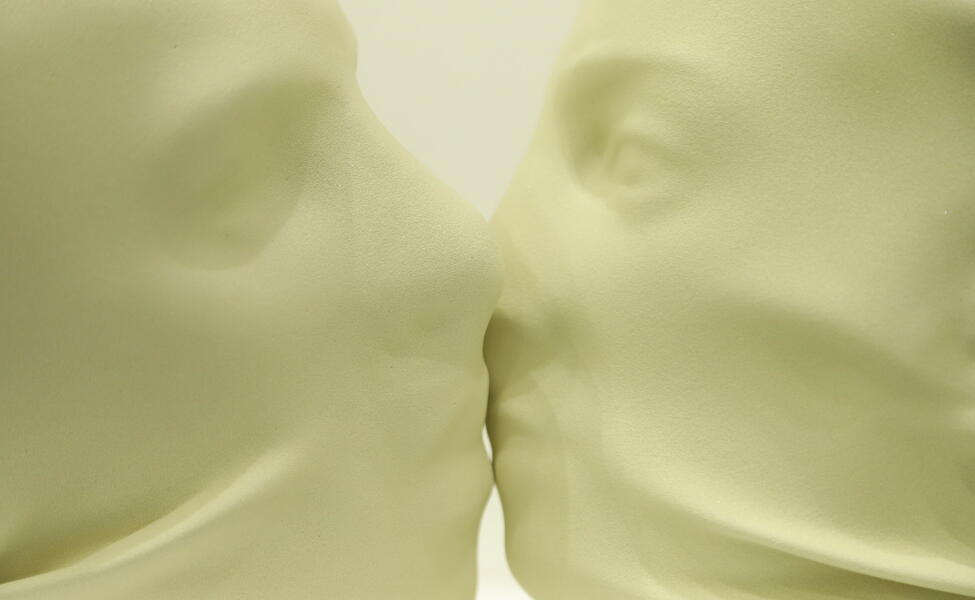
Founded in 1991 in Buenos Aires, arteba was established as a platform to promote Argentinian art and bring artists closer to a wide audience. It quickly became one of the region's most important fairs and a driving force in the local art market. It has also played a pivotal role in the Latin American art scene, being the first art fair established in the region. It was later followed by other notable fairs such as Zona Maco in Mexico (2002), ArtBo in Colombia (2005), and SP-Arte in Brazil (2005). With over 30 years of history and in the midst of a challenging economic context, this edition, featuring more than 400 artists represented by 65 galleries, opens its doors to special guests on August 28 and 29, and to the general public from Friday, August 30 to Sunday, September 1. For its organizers, the prospect of holding this edition seemed daunting at the beginning of the year due to the lack of price stability caused by years of inflation in the country. However, the fair has once again proven its resilience amidst the fluctuations of the Argentine economy. Larisa Andreani, the president of Fundación arteba, acknowledged, 'We did magic' to make this year’s event happen.
-
La reconocida artista pop Marta Minujín, quien vendió una importante obra durante el primer día de la pre-inauguración. Gentileza Fundación arteba
-
La reconocida artista pop Marta Minujín, quien vendió una importante obra durante el primer día de la pre-inauguración. Gentileza Fundación arteba
The relevance of arteba for the local art market and scene is undeniable. The fair not only drives sales and encourages collecting but also contributes to the growth and sophistication of the Argentine art market. This year, a new trend emerged: the practice of acquiring specific works in advance of the fair, mirroring a common approach at international art fairs. Prominent galleries such as Nora Fisch, Ruth Benzacar, Rolf Art, and Isla Flotante have reported sales even before the official start of the event.
This positive momentum was maintained during the opening day for special guests, where renowned collectors and institutions made significant acquisitions. Among the international museums that have incorporated works by Argentinian artists into their collections are the Guggenheim from New York, the Reina Sofía National Museum from Madrid, and the Centro de Arte 2 de Mayo, also from the Spanish capital. According to the organizers, fourteen museums will participate in this year's acquisition program.
The commitment of national institutions to the fair has been noteworthy, exemplified by the Museum of Latin American Art of Buenos Aires (MALBA), which added five new works to its collection. Funded by its Acquisitions Committee, these selected historical and contemporary pieces strengthen the museum's narrative on Latin American art. Similarly, the National Museum of Fine Arts has acquired three pieces by the renowned artist Rómulo Macció and an installation by Graciela Sacco, while the Museum of Contemporary Art of Salta has incorporated four other pieces by young and mid-career artists into its collection.
-
Gentileza Fundación arteba
-
Gentileza Fundación arteba
In addition to traditional collecting, a new trend is emerging in the Argentinian art market: a growing group of young collectors, primarily professionals under the age of thirty-five. This development indicates a promising future for the local art scene, with renewed interest in contemporary art and the expansion of the collector base to include new, younger players. In Argentina, funding from private companies also plays a vital role in the development of the local art scene. Elena Tavelli, Artistic Director of the Santander Foundation in Argentina, which serves as the official sponsor of arteba, emphasizes: “Being the main sponsor of the local art fair is a way to support the market's development and reach new audiences”. Tavelli emphasizes the abundance of talent and creativity in Argentina, noting the presence of numerous artists and cultural spaces with their own dedicated audiences. However, she identifies a critical gap: “What is often lacking is financing and money to generate large-scale projects and to achieve that necessary leap in quality”. In this context, Tavelli highlights the role of the private sector: “This is where private entities play an important role, acting as a guiding force and encouraging other companies to get involved”. In markets like Argentina, this perspective underscores the importance not only of immediate financial support through the purchase of artworks but also of fostering a more robust and sustainable artistic ecosystem in the long term.
-
Stand de Galería Grasa, en la sección Utopía. Gentileza Fundación arteba
-
Stand de Galería Grasa, en la sección Utopía. Gentileza Fundación arteba
In terms of the artistic offering, the exhibition pavilions of the Main Section bring together established galleries known for their strong reputations. This space features works by prominent Argentine artists, blending modern and contemporary art with pieces by mid-career artists. Among the standout works are a rarely seen collage-painting by Antonio Berni, priced at half a million dollars, and a nearly two-meter painting from 1986 by Guillermo Kuitca, listed at three hundred thousand dollars. While, the “Utopia” section showcases young and experimental projects, reflecting emerging movements within the federal art scene, with a strong presence of galleries from across the interior of the country. Although this edition features less international participation, the fair presents a diverse array of offerings, including icons of Argentine art, painting, textiles, photography, and even a performance series. It provides an essential journey through the Argentine art landscape, from classic to emerging voices.
-
Artwork by La Chola Poblete, the Argentinian artist who received a special mention from the Venice Biennale jury in April this year. Courtesy of Galería Barro
-
Artwork by La Chola Poblete, the Argentinian artist who received a special mention from the Venice Biennale jury in April this year. Courtesy of Galería Barro
*Cover photograph: work by Argentine artist Mariana De Matteis at the Diego Obligado gallery.
Related Topics
May interest you
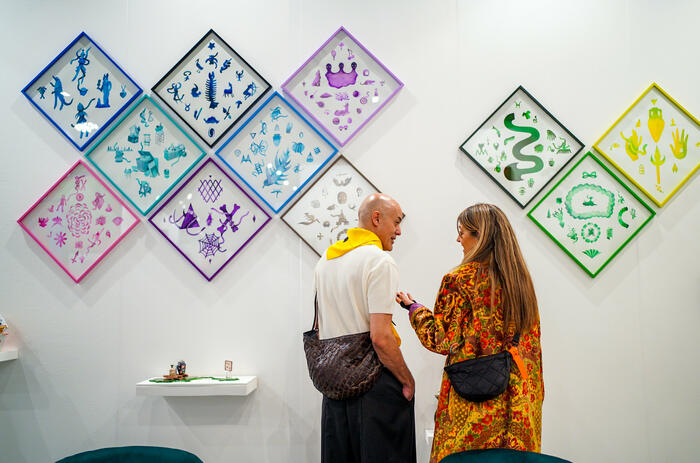
The arteba 2024 fair opens its doors to the general public from Friday, August 30 to Sunday, September 1 at the Centro Costa Salguero, Buenos Aires, Argentina. With the goal of serving as a meeting platform, the fair will bring together all those who make up the art ecosystem in Argentina: artists, gallery owners, curators, collectors, professionals and the interested public.
ARTEBA IN ITS 2024 EDITION – THE ARGENTINE ART ECOSYSTEM
The arteba 2024 fair opens its doors to the general public from Friday, August 30 to Sunday, September 1 at the Centro Costa Salguero, Buenos Aires, Argentina. With the goal of serving as a meeting platform, the fair will bring together all those who make up the art ecosystem in Argentina: artists, gallery owners, curators, collectors, professionals and the interested public.

The arteba 2024 fair opens its doors to the general public from Friday, August 30 to Sunday, September 1 at the Centro Costa Salguero, Buenos Aires, Argentina. With the goal of serving as a meeting platform, the fair will bring together all those who make up the art ecosystem in Argentina: artists, gallery owners, curators, collectors, professionals and the interested public.
ARTEBA IN ITS 2024 EDITION – THE ARGENTINE ART ECOSYSTEM
The arteba 2024 fair opens its doors to the general public from Friday, August 30 to Sunday, September 1 at the Centro Costa Salguero, Buenos Aires, Argentina. With the goal of serving as a meeting platform, the fair will bring together all those who make up the art ecosystem in Argentina: artists, gallery owners, curators, collectors, professionals and the interested public.
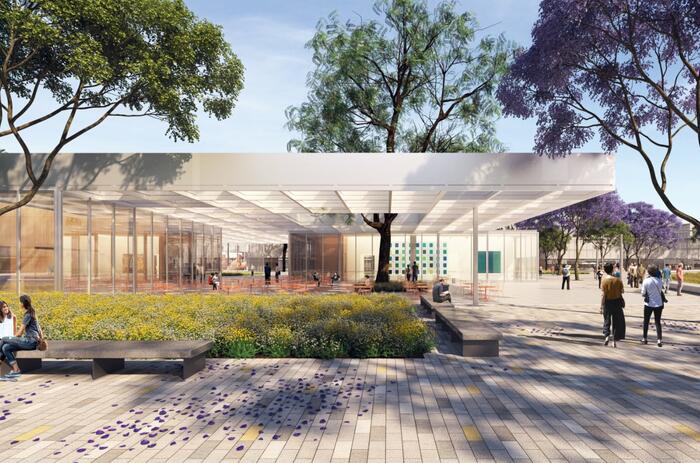
The Malba museum in Buenos Aires, Argentina expands with the construction of Malba Puertos, a new exhibition space in Escobar, province of Buenos Aires. It opens on September 21 and seeks -through activities and exhibitions- to bring art closer to the community.
MALBA PUERTOS: THE NEW VENUE IN ESCOBAR TO OPEN IN SEPTEMBER
The Malba museum in Buenos Aires, Argentina expands with the construction of Malba Puertos, a new exhibition space in Escobar, province of Buenos Aires. It opens on September 21 and seeks -through activities and exhibitions- to bring art closer to the community.
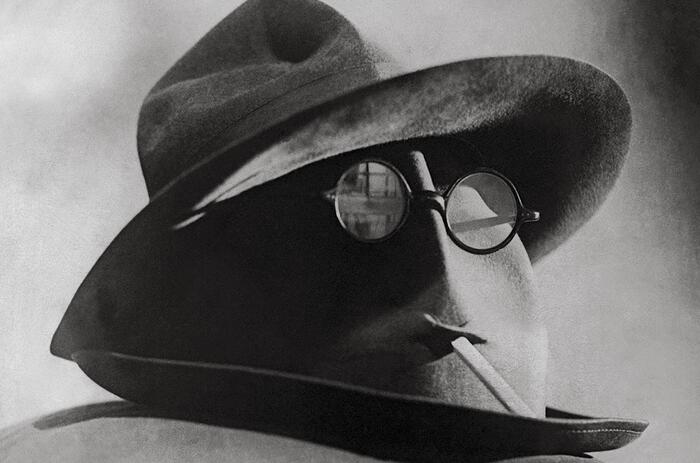
The most relevant art fair specialized in photography in Latin America Pinta BAphoto celebrates its twenty years of trajectory between October 24 and 27, 2024. Based in the city of Buenos Aires, it has established itself as an undisputed point of reference for photography.
20 YEARS OF PINTA BAphoto – THE CELEBRATION OF A VISION
The most relevant art fair specialized in photography in Latin America Pinta BAphoto celebrates its twenty years of trajectory between October 24 and 27, 2024. Based in the city of Buenos Aires, it has established itself as an undisputed point of reference for photography.
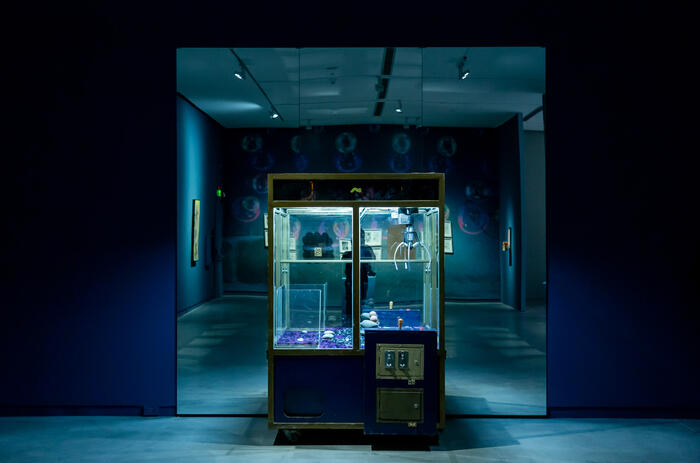
The Museo Moderno de Buenos Aires inaugurates the exhibition Martín Legón: Solo las piedras recuerdan (Only Stones Remember), in which the artist interrogates the present of human experience and wonders how human beings relate to images, how we construct knowledge, and in what remote place the mark of the human as it is known to the present will remain.
MARTÍN LEGÓN - IMAGES IN TENSION
The Museo Moderno de Buenos Aires inaugurates the exhibition Martín Legón: Solo las piedras recuerdan (Only Stones Remember), in which the artist interrogates the present of human experience and wonders how human beings relate to images, how we construct knowledge, and in what remote place the mark of the human as it is known to the present will remain.
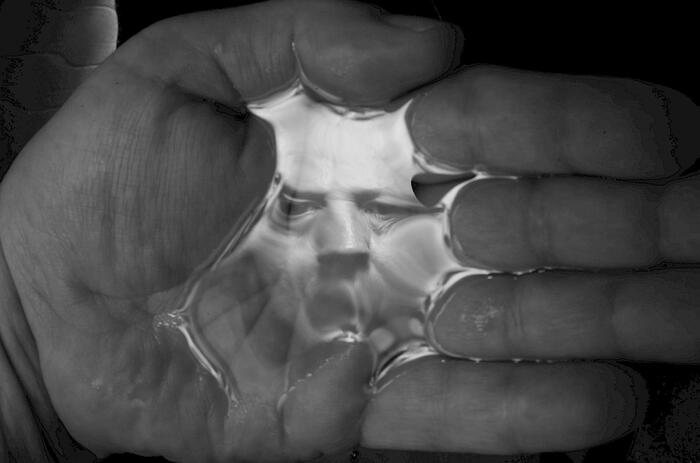
The Jewish Museum of Buenos Aires | Templo Libertad presented Falta compartida (Shared Absence), an exhibition that took place at the Rolf Gallery in 2019 as part of the commemoration of the 25th anniversary of the attack on the AMIA (Asociación Mutual Israelita Argentina), which itinerates on the occasion of the 30th anniversary, presenting itself as a reflection on the post-memory of recurring traumatic events in Argentine history.
SHARED ABSENCE – AN EXHIBITION OF COLLECTIVE MEMORY
The Jewish Museum of Buenos Aires | Templo Libertad presented Falta compartida (Shared Absence), an exhibition that took place at the Rolf Gallery in 2019 as part of the commemoration of the 25th anniversary of the attack on the AMIA (Asociación Mutual Israelita Argentina), which itinerates on the occasion of the 30th anniversary, presenting itself as a reflection on the post-memory of recurring traumatic events in Argentine history.

Energy Fields: Vibrations of The Pacific is an exhibition, publication, and series of public programs co-presented by Fulcrum Arts and Chapman University. Curated by Robert Takahashi Novak and Lawrence English, the exhibition presents a diverse and dynamic collection of works from artists working such as Alba Triana, David Haines and Joyce Hinterding, Steve Roden, Malena Szlam and Virginia Katz.
THE PACIFIC'S VIBRATIONS: AN EXHIBITION AT FULCRUM ARTS
Energy Fields: Vibrations of The Pacific is an exhibition, publication, and series of public programs co-presented by Fulcrum Arts and Chapman University. Curated by Robert Takahashi Novak and Lawrence English, the exhibition presents a diverse and dynamic collection of works from artists working such as Alba Triana, David Haines and Joyce Hinterding, Steve Roden, Malena Szlam and Virginia Katz.
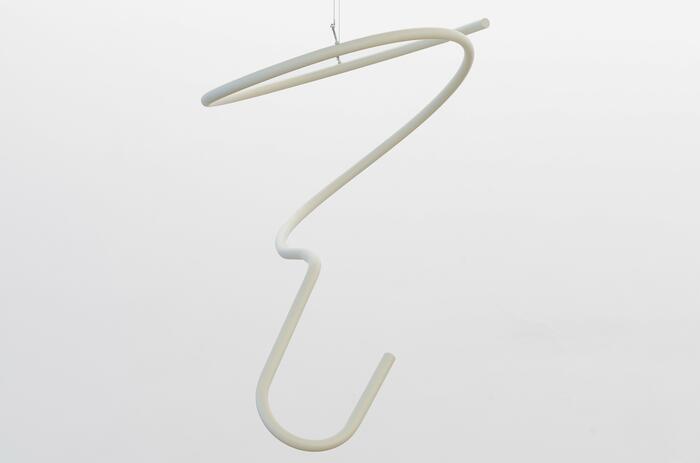
The Appearance: Art of the Asian Diaspora in Latin America & the Caribbean is the first exhibition in New York City at Americas Society to center the artistic production of the Asian diaspora in the region from the 1940s to the present. Focusing on postwar and contemporary art, the exhibition showcases the work of thirty artists from fifteen countries working in a range of artistic mediums including painting, sculpture, performance, photography, and video, to shed light into strategies and themes that resonate across a wide array of Asian diasporic practice throughout Latin America and the Caribbean.
ART OF THE ASIAN DIASPORA IN LATIN AMERICA & THE CARIBBEAN
The Appearance: Art of the Asian Diaspora in Latin America & the Caribbean is the first exhibition in New York City at Americas Society to center the artistic production of the Asian diaspora in the region from the 1940s to the present. Focusing on postwar and contemporary art, the exhibition showcases the work of thirty artists from fifteen countries working in a range of artistic mediums including painting, sculpture, performance, photography, and video, to shed light into strategies and themes that resonate across a wide array of Asian diasporic practice throughout Latin America and the Caribbean.

The Armory Show is taking place from September 6th to 8th. The fair’s 30th edition features over 235 galleries from 35 countries, showcasing artist projects in the Platform section, as well as highlights from sections Galleries, Focus, Solo and Presents, alongside presentation details for the Gramercy International Prize. Now part of the Frieze network, the Armory Show presents a revitalized program that offers a comprehensive view of the contemporary art world.
THE ARMORY SHOW’S 30th ANNIVERSARY EDITION
The Armory Show is taking place from September 6th to 8th. The fair’s 30th edition features over 235 galleries from 35 countries, showcasing artist projects in the Platform section, as well as highlights from sections Galleries, Focus, Solo and Presents, alongside presentation details for the Gramercy International Prize. Now part of the Frieze network, the Armory Show presents a revitalized program that offers a comprehensive view of the contemporary art world.
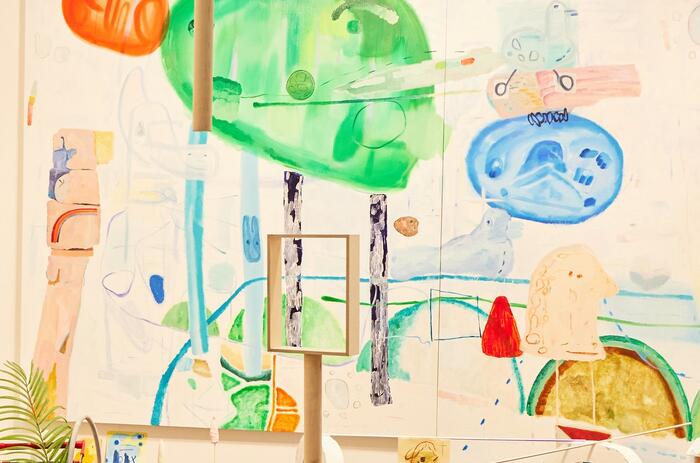
The first half of the year concluded on a low note, and as the art market gets ready to gear up for the last semester, a clearer picture of the challenges faced is emerging.
THE START OF THE SEASON
The first half of the year concluded on a low note, and as the art market gets ready to gear up for the last semester, a clearer picture of the challenges faced is emerging.

With the support of the Ministry of Culture of the City of Buenos Aires, on Saturday, September 14, 2024, a new edition of Gallery arrives in the Palermo and Villa Crespo districts, in the city of Buenos Aires, Argentina. Gallery promotes tours through art circuits visiting galleries, museums, artists' studios, museums and foundations.
A NEW EDITION OF GALLERY - THE CIRCUIT THAT TRAVELS THROUGH BUENOS AIRES' DISTRICTS
With the support of the Ministry of Culture of the City of Buenos Aires, on Saturday, September 14, 2024, a new edition of Gallery arrives in the Palermo and Villa Crespo districts, in the city of Buenos Aires, Argentina. Gallery promotes tours through art circuits visiting galleries, museums, artists' studios, museums and foundations.

In the centennial year of the birth of visionary Argentine artist Gyula Kosice (b. Ferdinand Fallik; Košice, Czechoslovakia, 1924 - Buenos Aires, 2016), Malba presents a monographic exhibition dedicated to his work, with the purpose of highlighting his pioneering role and repositioning him in the international context of postwar art.
INTERGALACTIC: GYULA KOSICE AT MALBA
In the centennial year of the birth of visionary Argentine artist Gyula Kosice (b. Ferdinand Fallik; Košice, Czechoslovakia, 1924 - Buenos Aires, 2016), Malba presents a monographic exhibition dedicated to his work, with the purpose of highlighting his pioneering role and repositioning him in the international context of postwar art.
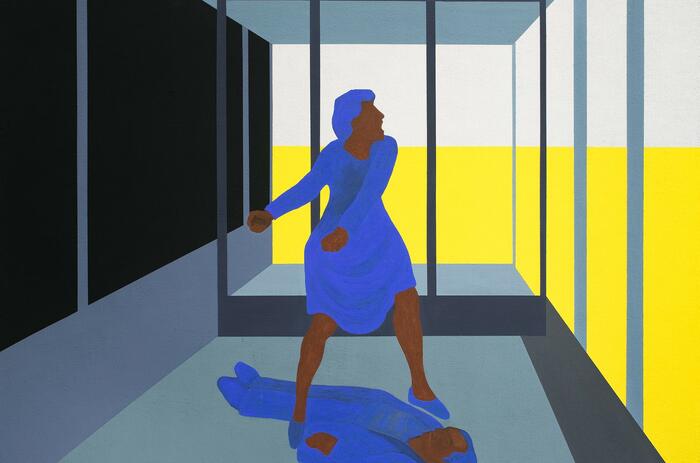
The EFG Latin America Art Award, in partnership with ArtNexus, announced Leila Tschopp of Buenos Aires, Argentina, as arteba's nominated artist for its annual acquisition award. The winning artist will be featured at Pinta Miami 2024.
LEILA TSCHOPP: ARTEBA'S NOMINEE FOR THE EFG LATIN AMERICA ART AWARD
The EFG Latin America Art Award, in partnership with ArtNexus, announced Leila Tschopp of Buenos Aires, Argentina, as arteba's nominated artist for its annual acquisition award. The winning artist will be featured at Pinta Miami 2024.

The arteba 2024 fair opens its doors to the general public from Friday, August 30 to Sunday, September 1 at the Centro Costa Salguero, Buenos Aires, Argentina. With the goal of serving as a meeting platform, the fair will bring together all those who make up the art ecosystem in Argentina: artists, gallery owners, curators, collectors, professionals and the interested public.
ARTEBA IN ITS 2024 EDITION – THE ARGENTINE ART ECOSYSTEM
The arteba 2024 fair opens its doors to the general public from Friday, August 30 to Sunday, September 1 at the Centro Costa Salguero, Buenos Aires, Argentina. With the goal of serving as a meeting platform, the fair will bring together all those who make up the art ecosystem in Argentina: artists, gallery owners, curators, collectors, professionals and the interested public.

The Malba museum in Buenos Aires, Argentina expands with the construction of Malba Puertos, a new exhibition space in Escobar, province of Buenos Aires. It opens on September 21 and seeks -through activities and exhibitions- to bring art closer to the community.
MALBA PUERTOS: THE NEW VENUE IN ESCOBAR TO OPEN IN SEPTEMBER
The Malba museum in Buenos Aires, Argentina expands with the construction of Malba Puertos, a new exhibition space in Escobar, province of Buenos Aires. It opens on September 21 and seeks -through activities and exhibitions- to bring art closer to the community.

The most relevant art fair specialized in photography in Latin America Pinta BAphoto celebrates its twenty years of trajectory between October 24 and 27, 2024. Based in the city of Buenos Aires, it has established itself as an undisputed point of reference for photography.
20 YEARS OF PINTA BAphoto – THE CELEBRATION OF A VISION
The most relevant art fair specialized in photography in Latin America Pinta BAphoto celebrates its twenty years of trajectory between October 24 and 27, 2024. Based in the city of Buenos Aires, it has established itself as an undisputed point of reference for photography.

The Museo Moderno de Buenos Aires inaugurates the exhibition Martín Legón: Solo las piedras recuerdan (Only Stones Remember), in which the artist interrogates the present of human experience and wonders how human beings relate to images, how we construct knowledge, and in what remote place the mark of the human as it is known to the present will remain.
MARTÍN LEGÓN - IMAGES IN TENSION
The Museo Moderno de Buenos Aires inaugurates the exhibition Martín Legón: Solo las piedras recuerdan (Only Stones Remember), in which the artist interrogates the present of human experience and wonders how human beings relate to images, how we construct knowledge, and in what remote place the mark of the human as it is known to the present will remain.

The Jewish Museum of Buenos Aires | Templo Libertad presented Falta compartida (Shared Absence), an exhibition that took place at the Rolf Gallery in 2019 as part of the commemoration of the 25th anniversary of the attack on the AMIA (Asociación Mutual Israelita Argentina), which itinerates on the occasion of the 30th anniversary, presenting itself as a reflection on the post-memory of recurring traumatic events in Argentine history.
SHARED ABSENCE – AN EXHIBITION OF COLLECTIVE MEMORY
The Jewish Museum of Buenos Aires | Templo Libertad presented Falta compartida (Shared Absence), an exhibition that took place at the Rolf Gallery in 2019 as part of the commemoration of the 25th anniversary of the attack on the AMIA (Asociación Mutual Israelita Argentina), which itinerates on the occasion of the 30th anniversary, presenting itself as a reflection on the post-memory of recurring traumatic events in Argentine history.

Energy Fields: Vibrations of The Pacific is an exhibition, publication, and series of public programs co-presented by Fulcrum Arts and Chapman University. Curated by Robert Takahashi Novak and Lawrence English, the exhibition presents a diverse and dynamic collection of works from artists working such as Alba Triana, David Haines and Joyce Hinterding, Steve Roden, Malena Szlam and Virginia Katz.
THE PACIFIC'S VIBRATIONS: AN EXHIBITION AT FULCRUM ARTS
Energy Fields: Vibrations of The Pacific is an exhibition, publication, and series of public programs co-presented by Fulcrum Arts and Chapman University. Curated by Robert Takahashi Novak and Lawrence English, the exhibition presents a diverse and dynamic collection of works from artists working such as Alba Triana, David Haines and Joyce Hinterding, Steve Roden, Malena Szlam and Virginia Katz.

The Appearance: Art of the Asian Diaspora in Latin America & the Caribbean is the first exhibition in New York City at Americas Society to center the artistic production of the Asian diaspora in the region from the 1940s to the present. Focusing on postwar and contemporary art, the exhibition showcases the work of thirty artists from fifteen countries working in a range of artistic mediums including painting, sculpture, performance, photography, and video, to shed light into strategies and themes that resonate across a wide array of Asian diasporic practice throughout Latin America and the Caribbean.
ART OF THE ASIAN DIASPORA IN LATIN AMERICA & THE CARIBBEAN
The Appearance: Art of the Asian Diaspora in Latin America & the Caribbean is the first exhibition in New York City at Americas Society to center the artistic production of the Asian diaspora in the region from the 1940s to the present. Focusing on postwar and contemporary art, the exhibition showcases the work of thirty artists from fifteen countries working in a range of artistic mediums including painting, sculpture, performance, photography, and video, to shed light into strategies and themes that resonate across a wide array of Asian diasporic practice throughout Latin America and the Caribbean.

The Armory Show is taking place from September 6th to 8th. The fair’s 30th edition features over 235 galleries from 35 countries, showcasing artist projects in the Platform section, as well as highlights from sections Galleries, Focus, Solo and Presents, alongside presentation details for the Gramercy International Prize. Now part of the Frieze network, the Armory Show presents a revitalized program that offers a comprehensive view of the contemporary art world.
THE ARMORY SHOW’S 30th ANNIVERSARY EDITION
The Armory Show is taking place from September 6th to 8th. The fair’s 30th edition features over 235 galleries from 35 countries, showcasing artist projects in the Platform section, as well as highlights from sections Galleries, Focus, Solo and Presents, alongside presentation details for the Gramercy International Prize. Now part of the Frieze network, the Armory Show presents a revitalized program that offers a comprehensive view of the contemporary art world.

The first half of the year concluded on a low note, and as the art market gets ready to gear up for the last semester, a clearer picture of the challenges faced is emerging.
THE START OF THE SEASON
The first half of the year concluded on a low note, and as the art market gets ready to gear up for the last semester, a clearer picture of the challenges faced is emerging.

With the support of the Ministry of Culture of the City of Buenos Aires, on Saturday, September 14, 2024, a new edition of Gallery arrives in the Palermo and Villa Crespo districts, in the city of Buenos Aires, Argentina. Gallery promotes tours through art circuits visiting galleries, museums, artists' studios, museums and foundations.
A NEW EDITION OF GALLERY - THE CIRCUIT THAT TRAVELS THROUGH BUENOS AIRES' DISTRICTS
With the support of the Ministry of Culture of the City of Buenos Aires, on Saturday, September 14, 2024, a new edition of Gallery arrives in the Palermo and Villa Crespo districts, in the city of Buenos Aires, Argentina. Gallery promotes tours through art circuits visiting galleries, museums, artists' studios, museums and foundations.

In the centennial year of the birth of visionary Argentine artist Gyula Kosice (b. Ferdinand Fallik; Košice, Czechoslovakia, 1924 - Buenos Aires, 2016), Malba presents a monographic exhibition dedicated to his work, with the purpose of highlighting his pioneering role and repositioning him in the international context of postwar art.
INTERGALACTIC: GYULA KOSICE AT MALBA
In the centennial year of the birth of visionary Argentine artist Gyula Kosice (b. Ferdinand Fallik; Košice, Czechoslovakia, 1924 - Buenos Aires, 2016), Malba presents a monographic exhibition dedicated to his work, with the purpose of highlighting his pioneering role and repositioning him in the international context of postwar art.

The EFG Latin America Art Award, in partnership with ArtNexus, announced Leila Tschopp of Buenos Aires, Argentina, as arteba's nominated artist for its annual acquisition award. The winning artist will be featured at Pinta Miami 2024.
LEILA TSCHOPP: ARTEBA'S NOMINEE FOR THE EFG LATIN AMERICA ART AWARD
The EFG Latin America Art Award, in partnership with ArtNexus, announced Leila Tschopp of Buenos Aires, Argentina, as arteba's nominated artist for its annual acquisition award. The winning artist will be featured at Pinta Miami 2024.

The arteba 2024 fair opens its doors to the general public from Friday, August 30 to Sunday, September 1 at the Centro Costa Salguero, Buenos Aires, Argentina. With the goal of serving as a meeting platform, the fair will bring together all those who make up the art ecosystem in Argentina: artists, gallery owners, curators, collectors, professionals and the interested public.
ARTEBA IN ITS 2024 EDITION – THE ARGENTINE ART ECOSYSTEM
The arteba 2024 fair opens its doors to the general public from Friday, August 30 to Sunday, September 1 at the Centro Costa Salguero, Buenos Aires, Argentina. With the goal of serving as a meeting platform, the fair will bring together all those who make up the art ecosystem in Argentina: artists, gallery owners, curators, collectors, professionals and the interested public.

The Malba museum in Buenos Aires, Argentina expands with the construction of Malba Puertos, a new exhibition space in Escobar, province of Buenos Aires. It opens on September 21 and seeks -through activities and exhibitions- to bring art closer to the community.
MALBA PUERTOS: THE NEW VENUE IN ESCOBAR TO OPEN IN SEPTEMBER
The Malba museum in Buenos Aires, Argentina expands with the construction of Malba Puertos, a new exhibition space in Escobar, province of Buenos Aires. It opens on September 21 and seeks -through activities and exhibitions- to bring art closer to the community.

The most relevant art fair specialized in photography in Latin America Pinta BAphoto celebrates its twenty years of trajectory between October 24 and 27, 2024. Based in the city of Buenos Aires, it has established itself as an undisputed point of reference for photography.
20 YEARS OF PINTA BAphoto – THE CELEBRATION OF A VISION
The most relevant art fair specialized in photography in Latin America Pinta BAphoto celebrates its twenty years of trajectory between October 24 and 27, 2024. Based in the city of Buenos Aires, it has established itself as an undisputed point of reference for photography.

The Museo Moderno de Buenos Aires inaugurates the exhibition Martín Legón: Solo las piedras recuerdan (Only Stones Remember), in which the artist interrogates the present of human experience and wonders how human beings relate to images, how we construct knowledge, and in what remote place the mark of the human as it is known to the present will remain.
MARTÍN LEGÓN - IMAGES IN TENSION
The Museo Moderno de Buenos Aires inaugurates the exhibition Martín Legón: Solo las piedras recuerdan (Only Stones Remember), in which the artist interrogates the present of human experience and wonders how human beings relate to images, how we construct knowledge, and in what remote place the mark of the human as it is known to the present will remain.

The Jewish Museum of Buenos Aires | Templo Libertad presented Falta compartida (Shared Absence), an exhibition that took place at the Rolf Gallery in 2019 as part of the commemoration of the 25th anniversary of the attack on the AMIA (Asociación Mutual Israelita Argentina), which itinerates on the occasion of the 30th anniversary, presenting itself as a reflection on the post-memory of recurring traumatic events in Argentine history.
SHARED ABSENCE – AN EXHIBITION OF COLLECTIVE MEMORY
The Jewish Museum of Buenos Aires | Templo Libertad presented Falta compartida (Shared Absence), an exhibition that took place at the Rolf Gallery in 2019 as part of the commemoration of the 25th anniversary of the attack on the AMIA (Asociación Mutual Israelita Argentina), which itinerates on the occasion of the 30th anniversary, presenting itself as a reflection on the post-memory of recurring traumatic events in Argentine history.

Energy Fields: Vibrations of The Pacific is an exhibition, publication, and series of public programs co-presented by Fulcrum Arts and Chapman University. Curated by Robert Takahashi Novak and Lawrence English, the exhibition presents a diverse and dynamic collection of works from artists working such as Alba Triana, David Haines and Joyce Hinterding, Steve Roden, Malena Szlam and Virginia Katz.
THE PACIFIC'S VIBRATIONS: AN EXHIBITION AT FULCRUM ARTS
Energy Fields: Vibrations of The Pacific is an exhibition, publication, and series of public programs co-presented by Fulcrum Arts and Chapman University. Curated by Robert Takahashi Novak and Lawrence English, the exhibition presents a diverse and dynamic collection of works from artists working such as Alba Triana, David Haines and Joyce Hinterding, Steve Roden, Malena Szlam and Virginia Katz.

The Appearance: Art of the Asian Diaspora in Latin America & the Caribbean is the first exhibition in New York City at Americas Society to center the artistic production of the Asian diaspora in the region from the 1940s to the present. Focusing on postwar and contemporary art, the exhibition showcases the work of thirty artists from fifteen countries working in a range of artistic mediums including painting, sculpture, performance, photography, and video, to shed light into strategies and themes that resonate across a wide array of Asian diasporic practice throughout Latin America and the Caribbean.
ART OF THE ASIAN DIASPORA IN LATIN AMERICA & THE CARIBBEAN
The Appearance: Art of the Asian Diaspora in Latin America & the Caribbean is the first exhibition in New York City at Americas Society to center the artistic production of the Asian diaspora in the region from the 1940s to the present. Focusing on postwar and contemporary art, the exhibition showcases the work of thirty artists from fifteen countries working in a range of artistic mediums including painting, sculpture, performance, photography, and video, to shed light into strategies and themes that resonate across a wide array of Asian diasporic practice throughout Latin America and the Caribbean.

The Armory Show is taking place from September 6th to 8th. The fair’s 30th edition features over 235 galleries from 35 countries, showcasing artist projects in the Platform section, as well as highlights from sections Galleries, Focus, Solo and Presents, alongside presentation details for the Gramercy International Prize. Now part of the Frieze network, the Armory Show presents a revitalized program that offers a comprehensive view of the contemporary art world.
THE ARMORY SHOW’S 30th ANNIVERSARY EDITION
The Armory Show is taking place from September 6th to 8th. The fair’s 30th edition features over 235 galleries from 35 countries, showcasing artist projects in the Platform section, as well as highlights from sections Galleries, Focus, Solo and Presents, alongside presentation details for the Gramercy International Prize. Now part of the Frieze network, the Armory Show presents a revitalized program that offers a comprehensive view of the contemporary art world.

The first half of the year concluded on a low note, and as the art market gets ready to gear up for the last semester, a clearer picture of the challenges faced is emerging.
THE START OF THE SEASON
The first half of the year concluded on a low note, and as the art market gets ready to gear up for the last semester, a clearer picture of the challenges faced is emerging.

With the support of the Ministry of Culture of the City of Buenos Aires, on Saturday, September 14, 2024, a new edition of Gallery arrives in the Palermo and Villa Crespo districts, in the city of Buenos Aires, Argentina. Gallery promotes tours through art circuits visiting galleries, museums, artists' studios, museums and foundations.
A NEW EDITION OF GALLERY - THE CIRCUIT THAT TRAVELS THROUGH BUENOS AIRES' DISTRICTS
With the support of the Ministry of Culture of the City of Buenos Aires, on Saturday, September 14, 2024, a new edition of Gallery arrives in the Palermo and Villa Crespo districts, in the city of Buenos Aires, Argentina. Gallery promotes tours through art circuits visiting galleries, museums, artists' studios, museums and foundations.

In the centennial year of the birth of visionary Argentine artist Gyula Kosice (b. Ferdinand Fallik; Košice, Czechoslovakia, 1924 - Buenos Aires, 2016), Malba presents a monographic exhibition dedicated to his work, with the purpose of highlighting his pioneering role and repositioning him in the international context of postwar art.
INTERGALACTIC: GYULA KOSICE AT MALBA
In the centennial year of the birth of visionary Argentine artist Gyula Kosice (b. Ferdinand Fallik; Košice, Czechoslovakia, 1924 - Buenos Aires, 2016), Malba presents a monographic exhibition dedicated to his work, with the purpose of highlighting his pioneering role and repositioning him in the international context of postwar art.

The EFG Latin America Art Award, in partnership with ArtNexus, announced Leila Tschopp of Buenos Aires, Argentina, as arteba's nominated artist for its annual acquisition award. The winning artist will be featured at Pinta Miami 2024.
LEILA TSCHOPP: ARTEBA'S NOMINEE FOR THE EFG LATIN AMERICA ART AWARD
The EFG Latin America Art Award, in partnership with ArtNexus, announced Leila Tschopp of Buenos Aires, Argentina, as arteba's nominated artist for its annual acquisition award. The winning artist will be featured at Pinta Miami 2024.

The arteba 2024 fair opens its doors to the general public from Friday, August 30 to Sunday, September 1 at the Centro Costa Salguero, Buenos Aires, Argentina. With the goal of serving as a meeting platform, the fair will bring together all those who make up the art ecosystem in Argentina: artists, gallery owners, curators, collectors, professionals and the interested public.
ARTEBA IN ITS 2024 EDITION – THE ARGENTINE ART ECOSYSTEM
The arteba 2024 fair opens its doors to the general public from Friday, August 30 to Sunday, September 1 at the Centro Costa Salguero, Buenos Aires, Argentina. With the goal of serving as a meeting platform, the fair will bring together all those who make up the art ecosystem in Argentina: artists, gallery owners, curators, collectors, professionals and the interested public.

The Malba museum in Buenos Aires, Argentina expands with the construction of Malba Puertos, a new exhibition space in Escobar, province of Buenos Aires. It opens on September 21 and seeks -through activities and exhibitions- to bring art closer to the community.
MALBA PUERTOS: THE NEW VENUE IN ESCOBAR TO OPEN IN SEPTEMBER
The Malba museum in Buenos Aires, Argentina expands with the construction of Malba Puertos, a new exhibition space in Escobar, province of Buenos Aires. It opens on September 21 and seeks -through activities and exhibitions- to bring art closer to the community.

The most relevant art fair specialized in photography in Latin America Pinta BAphoto celebrates its twenty years of trajectory between October 24 and 27, 2024. Based in the city of Buenos Aires, it has established itself as an undisputed point of reference for photography.
20 YEARS OF PINTA BAphoto – THE CELEBRATION OF A VISION
The most relevant art fair specialized in photography in Latin America Pinta BAphoto celebrates its twenty years of trajectory between October 24 and 27, 2024. Based in the city of Buenos Aires, it has established itself as an undisputed point of reference for photography.

The Museo Moderno de Buenos Aires inaugurates the exhibition Martín Legón: Solo las piedras recuerdan (Only Stones Remember), in which the artist interrogates the present of human experience and wonders how human beings relate to images, how we construct knowledge, and in what remote place the mark of the human as it is known to the present will remain.
MARTÍN LEGÓN - IMAGES IN TENSION
The Museo Moderno de Buenos Aires inaugurates the exhibition Martín Legón: Solo las piedras recuerdan (Only Stones Remember), in which the artist interrogates the present of human experience and wonders how human beings relate to images, how we construct knowledge, and in what remote place the mark of the human as it is known to the present will remain.

The Jewish Museum of Buenos Aires | Templo Libertad presented Falta compartida (Shared Absence), an exhibition that took place at the Rolf Gallery in 2019 as part of the commemoration of the 25th anniversary of the attack on the AMIA (Asociación Mutual Israelita Argentina), which itinerates on the occasion of the 30th anniversary, presenting itself as a reflection on the post-memory of recurring traumatic events in Argentine history.
SHARED ABSENCE – AN EXHIBITION OF COLLECTIVE MEMORY
The Jewish Museum of Buenos Aires | Templo Libertad presented Falta compartida (Shared Absence), an exhibition that took place at the Rolf Gallery in 2019 as part of the commemoration of the 25th anniversary of the attack on the AMIA (Asociación Mutual Israelita Argentina), which itinerates on the occasion of the 30th anniversary, presenting itself as a reflection on the post-memory of recurring traumatic events in Argentine history.

Energy Fields: Vibrations of The Pacific is an exhibition, publication, and series of public programs co-presented by Fulcrum Arts and Chapman University. Curated by Robert Takahashi Novak and Lawrence English, the exhibition presents a diverse and dynamic collection of works from artists working such as Alba Triana, David Haines and Joyce Hinterding, Steve Roden, Malena Szlam and Virginia Katz.
THE PACIFIC'S VIBRATIONS: AN EXHIBITION AT FULCRUM ARTS
Energy Fields: Vibrations of The Pacific is an exhibition, publication, and series of public programs co-presented by Fulcrum Arts and Chapman University. Curated by Robert Takahashi Novak and Lawrence English, the exhibition presents a diverse and dynamic collection of works from artists working such as Alba Triana, David Haines and Joyce Hinterding, Steve Roden, Malena Szlam and Virginia Katz.

The Appearance: Art of the Asian Diaspora in Latin America & the Caribbean is the first exhibition in New York City at Americas Society to center the artistic production of the Asian diaspora in the region from the 1940s to the present. Focusing on postwar and contemporary art, the exhibition showcases the work of thirty artists from fifteen countries working in a range of artistic mediums including painting, sculpture, performance, photography, and video, to shed light into strategies and themes that resonate across a wide array of Asian diasporic practice throughout Latin America and the Caribbean.
ART OF THE ASIAN DIASPORA IN LATIN AMERICA & THE CARIBBEAN
The Appearance: Art of the Asian Diaspora in Latin America & the Caribbean is the first exhibition in New York City at Americas Society to center the artistic production of the Asian diaspora in the region from the 1940s to the present. Focusing on postwar and contemporary art, the exhibition showcases the work of thirty artists from fifteen countries working in a range of artistic mediums including painting, sculpture, performance, photography, and video, to shed light into strategies and themes that resonate across a wide array of Asian diasporic practice throughout Latin America and the Caribbean.

The Armory Show is taking place from September 6th to 8th. The fair’s 30th edition features over 235 galleries from 35 countries, showcasing artist projects in the Platform section, as well as highlights from sections Galleries, Focus, Solo and Presents, alongside presentation details for the Gramercy International Prize. Now part of the Frieze network, the Armory Show presents a revitalized program that offers a comprehensive view of the contemporary art world.
THE ARMORY SHOW’S 30th ANNIVERSARY EDITION
The Armory Show is taking place from September 6th to 8th. The fair’s 30th edition features over 235 galleries from 35 countries, showcasing artist projects in the Platform section, as well as highlights from sections Galleries, Focus, Solo and Presents, alongside presentation details for the Gramercy International Prize. Now part of the Frieze network, the Armory Show presents a revitalized program that offers a comprehensive view of the contemporary art world.

The first half of the year concluded on a low note, and as the art market gets ready to gear up for the last semester, a clearer picture of the challenges faced is emerging.
THE START OF THE SEASON
The first half of the year concluded on a low note, and as the art market gets ready to gear up for the last semester, a clearer picture of the challenges faced is emerging.

With the support of the Ministry of Culture of the City of Buenos Aires, on Saturday, September 14, 2024, a new edition of Gallery arrives in the Palermo and Villa Crespo districts, in the city of Buenos Aires, Argentina. Gallery promotes tours through art circuits visiting galleries, museums, artists' studios, museums and foundations.
A NEW EDITION OF GALLERY - THE CIRCUIT THAT TRAVELS THROUGH BUENOS AIRES' DISTRICTS
With the support of the Ministry of Culture of the City of Buenos Aires, on Saturday, September 14, 2024, a new edition of Gallery arrives in the Palermo and Villa Crespo districts, in the city of Buenos Aires, Argentina. Gallery promotes tours through art circuits visiting galleries, museums, artists' studios, museums and foundations.

In the centennial year of the birth of visionary Argentine artist Gyula Kosice (b. Ferdinand Fallik; Košice, Czechoslovakia, 1924 - Buenos Aires, 2016), Malba presents a monographic exhibition dedicated to his work, with the purpose of highlighting his pioneering role and repositioning him in the international context of postwar art.
INTERGALACTIC: GYULA KOSICE AT MALBA
In the centennial year of the birth of visionary Argentine artist Gyula Kosice (b. Ferdinand Fallik; Košice, Czechoslovakia, 1924 - Buenos Aires, 2016), Malba presents a monographic exhibition dedicated to his work, with the purpose of highlighting his pioneering role and repositioning him in the international context of postwar art.

The EFG Latin America Art Award, in partnership with ArtNexus, announced Leila Tschopp of Buenos Aires, Argentina, as arteba's nominated artist for its annual acquisition award. The winning artist will be featured at Pinta Miami 2024.
LEILA TSCHOPP: ARTEBA'S NOMINEE FOR THE EFG LATIN AMERICA ART AWARD
The EFG Latin America Art Award, in partnership with ArtNexus, announced Leila Tschopp of Buenos Aires, Argentina, as arteba's nominated artist for its annual acquisition award. The winning artist will be featured at Pinta Miami 2024.

The arteba 2024 fair opens its doors to the general public from Friday, August 30 to Sunday, September 1 at the Centro Costa Salguero, Buenos Aires, Argentina. With the goal of serving as a meeting platform, the fair will bring together all those who make up the art ecosystem in Argentina: artists, gallery owners, curators, collectors, professionals and the interested public.
ARTEBA IN ITS 2024 EDITION – THE ARGENTINE ART ECOSYSTEM
The arteba 2024 fair opens its doors to the general public from Friday, August 30 to Sunday, September 1 at the Centro Costa Salguero, Buenos Aires, Argentina. With the goal of serving as a meeting platform, the fair will bring together all those who make up the art ecosystem in Argentina: artists, gallery owners, curators, collectors, professionals and the interested public.

The Malba museum in Buenos Aires, Argentina expands with the construction of Malba Puertos, a new exhibition space in Escobar, province of Buenos Aires. It opens on September 21 and seeks -through activities and exhibitions- to bring art closer to the community.
MALBA PUERTOS: THE NEW VENUE IN ESCOBAR TO OPEN IN SEPTEMBER
The Malba museum in Buenos Aires, Argentina expands with the construction of Malba Puertos, a new exhibition space in Escobar, province of Buenos Aires. It opens on September 21 and seeks -through activities and exhibitions- to bring art closer to the community.

The most relevant art fair specialized in photography in Latin America Pinta BAphoto celebrates its twenty years of trajectory between October 24 and 27, 2024. Based in the city of Buenos Aires, it has established itself as an undisputed point of reference for photography.
20 YEARS OF PINTA BAphoto – THE CELEBRATION OF A VISION
The most relevant art fair specialized in photography in Latin America Pinta BAphoto celebrates its twenty years of trajectory between October 24 and 27, 2024. Based in the city of Buenos Aires, it has established itself as an undisputed point of reference for photography.

The Museo Moderno de Buenos Aires inaugurates the exhibition Martín Legón: Solo las piedras recuerdan (Only Stones Remember), in which the artist interrogates the present of human experience and wonders how human beings relate to images, how we construct knowledge, and in what remote place the mark of the human as it is known to the present will remain.
MARTÍN LEGÓN - IMAGES IN TENSION
The Museo Moderno de Buenos Aires inaugurates the exhibition Martín Legón: Solo las piedras recuerdan (Only Stones Remember), in which the artist interrogates the present of human experience and wonders how human beings relate to images, how we construct knowledge, and in what remote place the mark of the human as it is known to the present will remain.

The Jewish Museum of Buenos Aires | Templo Libertad presented Falta compartida (Shared Absence), an exhibition that took place at the Rolf Gallery in 2019 as part of the commemoration of the 25th anniversary of the attack on the AMIA (Asociación Mutual Israelita Argentina), which itinerates on the occasion of the 30th anniversary, presenting itself as a reflection on the post-memory of recurring traumatic events in Argentine history.
SHARED ABSENCE – AN EXHIBITION OF COLLECTIVE MEMORY
The Jewish Museum of Buenos Aires | Templo Libertad presented Falta compartida (Shared Absence), an exhibition that took place at the Rolf Gallery in 2019 as part of the commemoration of the 25th anniversary of the attack on the AMIA (Asociación Mutual Israelita Argentina), which itinerates on the occasion of the 30th anniversary, presenting itself as a reflection on the post-memory of recurring traumatic events in Argentine history.

Energy Fields: Vibrations of The Pacific is an exhibition, publication, and series of public programs co-presented by Fulcrum Arts and Chapman University. Curated by Robert Takahashi Novak and Lawrence English, the exhibition presents a diverse and dynamic collection of works from artists working such as Alba Triana, David Haines and Joyce Hinterding, Steve Roden, Malena Szlam and Virginia Katz.
THE PACIFIC'S VIBRATIONS: AN EXHIBITION AT FULCRUM ARTS
Energy Fields: Vibrations of The Pacific is an exhibition, publication, and series of public programs co-presented by Fulcrum Arts and Chapman University. Curated by Robert Takahashi Novak and Lawrence English, the exhibition presents a diverse and dynamic collection of works from artists working such as Alba Triana, David Haines and Joyce Hinterding, Steve Roden, Malena Szlam and Virginia Katz.

The Appearance: Art of the Asian Diaspora in Latin America & the Caribbean is the first exhibition in New York City at Americas Society to center the artistic production of the Asian diaspora in the region from the 1940s to the present. Focusing on postwar and contemporary art, the exhibition showcases the work of thirty artists from fifteen countries working in a range of artistic mediums including painting, sculpture, performance, photography, and video, to shed light into strategies and themes that resonate across a wide array of Asian diasporic practice throughout Latin America and the Caribbean.
ART OF THE ASIAN DIASPORA IN LATIN AMERICA & THE CARIBBEAN
The Appearance: Art of the Asian Diaspora in Latin America & the Caribbean is the first exhibition in New York City at Americas Society to center the artistic production of the Asian diaspora in the region from the 1940s to the present. Focusing on postwar and contemporary art, the exhibition showcases the work of thirty artists from fifteen countries working in a range of artistic mediums including painting, sculpture, performance, photography, and video, to shed light into strategies and themes that resonate across a wide array of Asian diasporic practice throughout Latin America and the Caribbean.

The Armory Show is taking place from September 6th to 8th. The fair’s 30th edition features over 235 galleries from 35 countries, showcasing artist projects in the Platform section, as well as highlights from sections Galleries, Focus, Solo and Presents, alongside presentation details for the Gramercy International Prize. Now part of the Frieze network, the Armory Show presents a revitalized program that offers a comprehensive view of the contemporary art world.
THE ARMORY SHOW’S 30th ANNIVERSARY EDITION
The Armory Show is taking place from September 6th to 8th. The fair’s 30th edition features over 235 galleries from 35 countries, showcasing artist projects in the Platform section, as well as highlights from sections Galleries, Focus, Solo and Presents, alongside presentation details for the Gramercy International Prize. Now part of the Frieze network, the Armory Show presents a revitalized program that offers a comprehensive view of the contemporary art world.

The first half of the year concluded on a low note, and as the art market gets ready to gear up for the last semester, a clearer picture of the challenges faced is emerging.
THE START OF THE SEASON
The first half of the year concluded on a low note, and as the art market gets ready to gear up for the last semester, a clearer picture of the challenges faced is emerging.

With the support of the Ministry of Culture of the City of Buenos Aires, on Saturday, September 14, 2024, a new edition of Gallery arrives in the Palermo and Villa Crespo districts, in the city of Buenos Aires, Argentina. Gallery promotes tours through art circuits visiting galleries, museums, artists' studios, museums and foundations.
A NEW EDITION OF GALLERY - THE CIRCUIT THAT TRAVELS THROUGH BUENOS AIRES' DISTRICTS
With the support of the Ministry of Culture of the City of Buenos Aires, on Saturday, September 14, 2024, a new edition of Gallery arrives in the Palermo and Villa Crespo districts, in the city of Buenos Aires, Argentina. Gallery promotes tours through art circuits visiting galleries, museums, artists' studios, museums and foundations.

In the centennial year of the birth of visionary Argentine artist Gyula Kosice (b. Ferdinand Fallik; Košice, Czechoslovakia, 1924 - Buenos Aires, 2016), Malba presents a monographic exhibition dedicated to his work, with the purpose of highlighting his pioneering role and repositioning him in the international context of postwar art.
INTERGALACTIC: GYULA KOSICE AT MALBA
In the centennial year of the birth of visionary Argentine artist Gyula Kosice (b. Ferdinand Fallik; Košice, Czechoslovakia, 1924 - Buenos Aires, 2016), Malba presents a monographic exhibition dedicated to his work, with the purpose of highlighting his pioneering role and repositioning him in the international context of postwar art.

The EFG Latin America Art Award, in partnership with ArtNexus, announced Leila Tschopp of Buenos Aires, Argentina, as arteba's nominated artist for its annual acquisition award. The winning artist will be featured at Pinta Miami 2024.
LEILA TSCHOPP: ARTEBA'S NOMINEE FOR THE EFG LATIN AMERICA ART AWARD
The EFG Latin America Art Award, in partnership with ArtNexus, announced Leila Tschopp of Buenos Aires, Argentina, as arteba's nominated artist for its annual acquisition award. The winning artist will be featured at Pinta Miami 2024.


